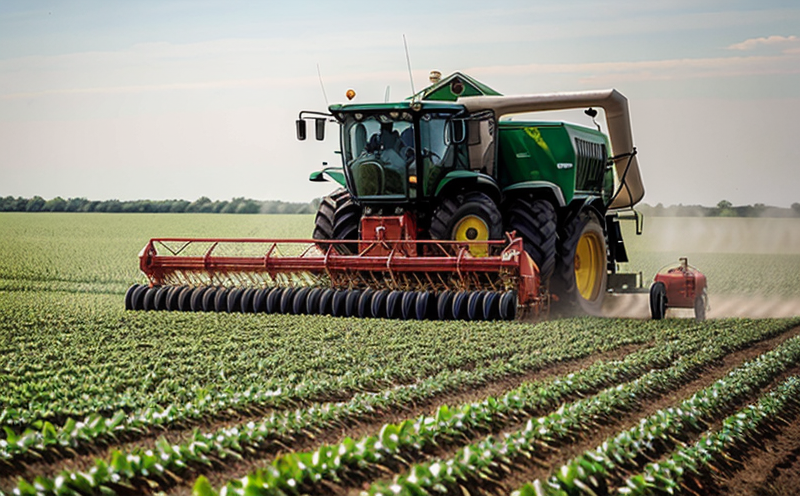Dry Matter Accumulation Testing
Dry matter accumulation testing is a critical process in agriculture and forestry, providing insights into the productivity and efficiency of crops. This test measures the amount of dry weight accumulated by plants over time, which directly correlates with overall yield and resource utilization. In agricultural settings, this information can help optimize irrigation schedules, nutrient management, and pest control strategies. For forestry applications, it aids in assessing tree growth rates and forest health.
Understanding dry matter accumulation allows for more precise predictions of crop yields, leading to better decision-making regarding planting density, fertilization, and harvesting times. This testing is particularly valuable when dealing with high-value crops or those that are sensitive to environmental changes. It helps in identifying optimal growing conditions and varieties that perform best under specific climatic or soil conditions.
For quality managers, this test ensures consistent product quality by providing a baseline for comparing different lots of produce. Compliance officers benefit from it as they can monitor adherence to industry standards and regulatory requirements. In research and development (R&D) teams, dry matter accumulation testing is instrumental in validating new crop varieties or breeding programs.
The process involves collecting samples at specific intervals throughout the growing season, drying them under controlled conditions, and weighing them to determine the percentage of water lost. This information can then be used to calculate the rate of dry matter accumulation, which is crucial for assessing plant health and productivity.
| Step | Description |
|---|---|
| Sample Collection | Select representative plant parts from the field or greenhouse. |
| Drying | Place samples in a drying oven set to 60°C until constant weight is achieved. |
| Weighing | Weigh the dried sample and calculate the percentage of water lost. |
Scope and Methodology
The scope of dry matter accumulation testing encompasses a range of applications within agriculture and forestry. It is particularly relevant for assessing the productivity of crops like wheat, corn, and soybeans in agricultural settings. In forestry, it can be used to evaluate tree growth rates and assess the health of stands.
| Parameter | Description |
|---|---|
| Sample Type | Leaves, stems, roots, or whole plants. |
| Drying Temperature | 60°C to ensure complete dehydration without causing structural damage. |
| Weighing Precision | To the nearest 0.1 gram for high precision. |
Customer Impact and Satisfaction
The implementation of dry matter accumulation testing has a profound impact on customer satisfaction within the sector. By providing accurate and timely data, quality managers can ensure that products meet or exceed industry standards. Compliance officers find this test invaluable as it helps in maintaining regulatory compliance, thereby avoiding potential fines and legal issues.
R&D engineers benefit from this service by being able to compare different varieties of crops under various conditions. This allows them to make informed decisions about which traits are most beneficial for commercial cultivation. Procurement teams also gain significant value as they can use the results of dry matter accumulation tests to select suppliers who adhere to high standards.
Customer satisfaction is further enhanced by the precision and reliability of the test results. This leads to more consistent products, reduced waste, and better resource utilization, all contributing to a positive brand reputation. The ability to predict yield accurately also reduces financial risks associated with fluctuating market prices and supply chain disruptions.
Use Cases and Application Examples
- Agricultural Research: Used to evaluate the impact of different fertilizers or irrigation techniques on crop yield.
- Farm Management: Helps in optimizing resource use by identifying the most efficient harvesting times.
- Forestry Operations: Assists in assessing tree growth rates and forest health, aiding in sustainable management practices.
| Application | Description |
|---|---|
| Crop Selection | Determining which crop varieties perform best under specific environmental conditions. |
| Resource Allocation | Optimizing water and nutrient use based on dry matter accumulation rates. |
| Harvest Timing | Selecting the best time to harvest crops for maximum yield and quality. |





